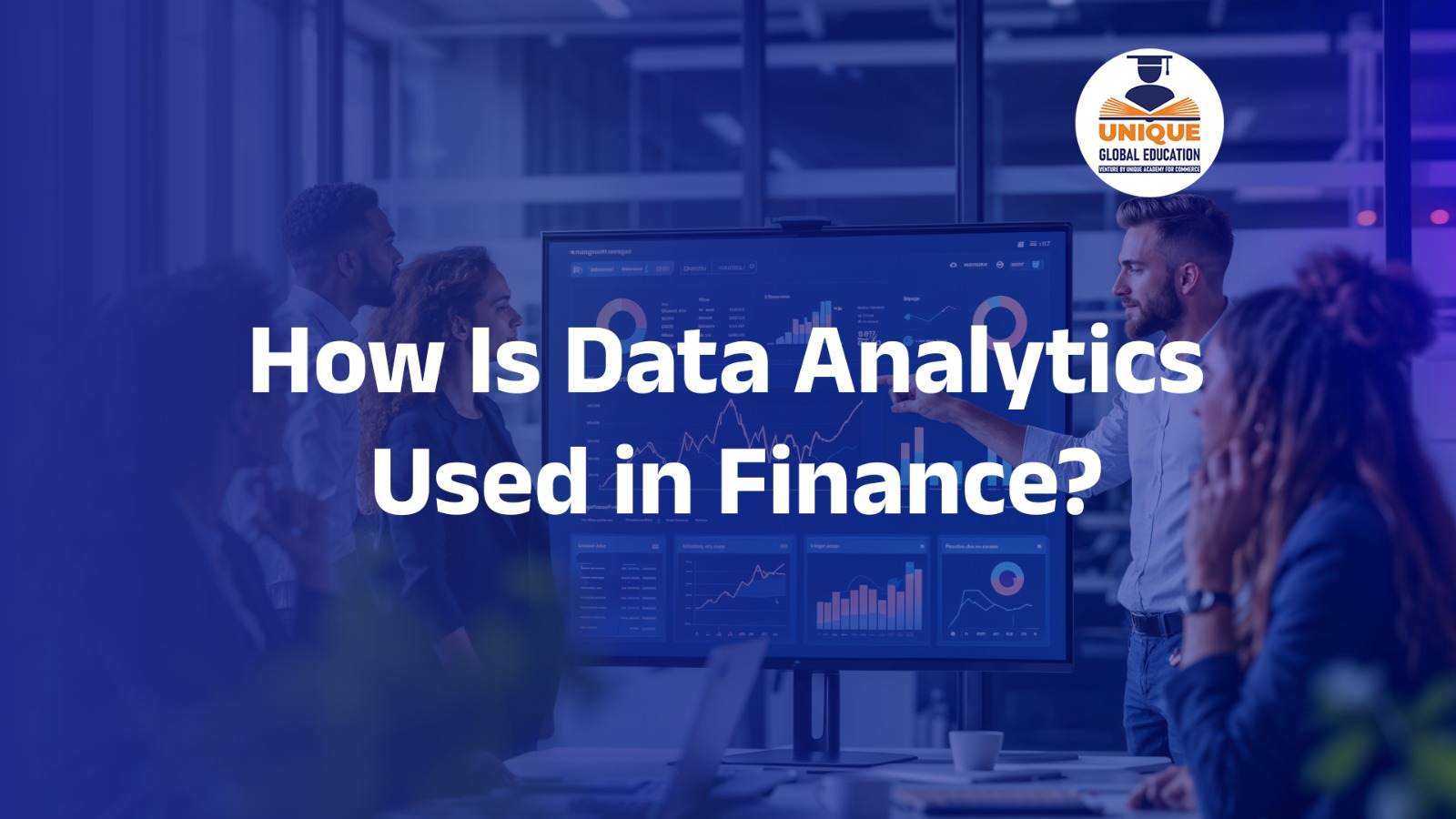The finance world is changing quickly today. For banks, companies and investors, data analytics has become a critically important tool. Massive amounts of information are gathered each day – on customer transactions, stock market swings, spending habits. Data analytics takes all this data and helps it to make sense, to become ideas. But what does it mean, exactly, in finance? Let’s understand it simply.
Table of Contents
What is Data Analytics in Finance?
Analytics means examining a lot of data to draw conclusions – to find patterns and, ultimately, make predictions about what might happen in the future (including, possibly, what are the best teams to put on the field on a given night, or the best pitcher to start).
In finance, how data analytics can assist companies:
- Spot patterns and odd behaviour
- Predict future market prices
- Plan better investments
- Catch fraud early
- Provide tailored services to your clients
In brief, it helps you save money, make money and de-risk.
Where is Data Analytics Used in Finance?
- Managing Risk

Risk management is one of the most essential parts of finance – trying to ensure small losses.
Data analytics helps by:
- Looking for whether a customer would default on a loan
- Guiding investors to see risks lurking in the market
- Aiding insurers’ attempts to predict when they will have to pay claims
Now, using modern tools, banks as well as companies can sniff out problems before they occur and intervene when needed.
- Stopping Fraud
Fraud is a big problem. Fake transactions or cheating costs businesses lots of money every year.
Data analytics helps by:
- Monitoring credit card uses to spot anything unusual
- On the trail of strange activity in banking apps
- Seeing dramatic, sudden changes in money habits
Visa and Mastercard are able to use data analytics to catch fraud quickly and help keep their customers safe.
- The Investments and Portfolio Management
Until now, people put money mostly on experience or guesswork. Now, data analysis makes for smarter investment.
For example:
- Computers running algorithmic trading software can do things like buy and sell shares in a few thousandths of a second.
- Platforms like Betterment are “robo-advisers” that guide you on investments based on your needs.
- Sentiment analysis is scanning news and social media for what people are feeling about the market.
As a result, investors are able to make better decisions, more quickly.
- Adhering to the Rules (Regulatory Compliance and Self-Regulation)

If you are a bank or a finance company, there are thousands of rules made by governments that, most of the time, you have to follow. Violating these rules can result in hefty fines.
Data analytics helps by:
- Verifying transactions to prevent money laundering
- Automating reports for Government tests
- Ensuring everything you do is well-memorialized
It’s a way that companies can stay out of legal jeopardy.
- A Unique Service to Your Customers
Banks and other financial institutions are really in the position to be able to know what customers want today.
Data analytics helps by:
- Recommending products customers might enjoy (loans, cards, insurance)
- Submit direct offers and personal tips
- Sensing when a customer might need some financial assistance
That keeps customers content and loyal.
Get Details for US CMA Online & Face to Face Batches
- Forecasting and Planning
Layoffs are companies’ plans for the future. Predictive analytics is a method of using old data to guess future trends.
For example:
- Businesses are better able to budget
- Investment professionals can recommend better saving plans
- Investors are able to forecast market directions
The better we plan the better our financial health.
Instruments of Financial Analytics

There are a variety of tools that finance professionals make use of for data analytics including:
- Python (and R) as programming languages for data analysis
- SQL: For handling large databases up to date
- Power BI and Tableau: Building readable charts and dashboards
- Machine Learning: Develop models that can predict or even uncover correlative patterns
- Big Data Platforms: Such as the Hadoop and cloud servers to handle massive data masses
These are tools that help move companies from manual to smart, automated systems.
Obstacles to Applying Data Analytics in Finance
With that said, while data analytics is very powerful, there are challenges:
- Securing data: It is crucial to protect financial data from hackers.
- Poor-quality data: Incorrect or missing data can result in incorrect decisions.
- Shortage of talent: Finance companies must have more people in their ranks who understand finance and analytics.
- It’s expensive: Good tools and good people are expensive.
That said, companies that invest in good analytics do have a big leg up.
Trends of Data Analytics in Finance/Prediction/Forecast.
The future looks exciting! With developments in technologies like AI, blockchain and real-time data monitoring, financial decision-making is only going to become faster and smarter. Companies will know far better what risks and needs customers have than they do today.
Those who use data analytics in a smart way will grow and thrive, while others could be left trailing.
FAQ: What Are the Applications of Data Analytics in Finance?
Ans: Data analytics in finance is the practice of examining and analysing large amounts of financial data in order to discover patterns, make predictions and other business-related decisions.
Banks and companies use lot of data that comes its way to do predictive modelling and data analytics to check chances of loss, which means also predicting your customer behaviour, predicting the movements in the market and potentially spotting problems early.
Ans: Yes! Data analytics monitors for suspicious behaviour such as large transactions or account idiosyncrasies and warns companies of potential fraud.
Ans: It enable investors to take informed decisions by analysing historical data, market news and customers sentiments. It fuels automated trading and robo-advisors, too.
Ans: Using data analytics, companies can provide personalized loans, cards and service based on the need of every customer leading to customers who are happier.
Conclusion
Finance is being disrupted in a major way by data analytics. It helps banks, investors and companies manage risks, catch fraud, invest more wisely and serve customers more effectively.
In an increasingly data-driven world, knowing how to work with data is like having a key to professional success. Professionals and companies in finance that are able to harness the power of data analytics are going to be miles ahead and will fare a lot better in the future.
Get Details for US CMA Online & Face to Face Batches






